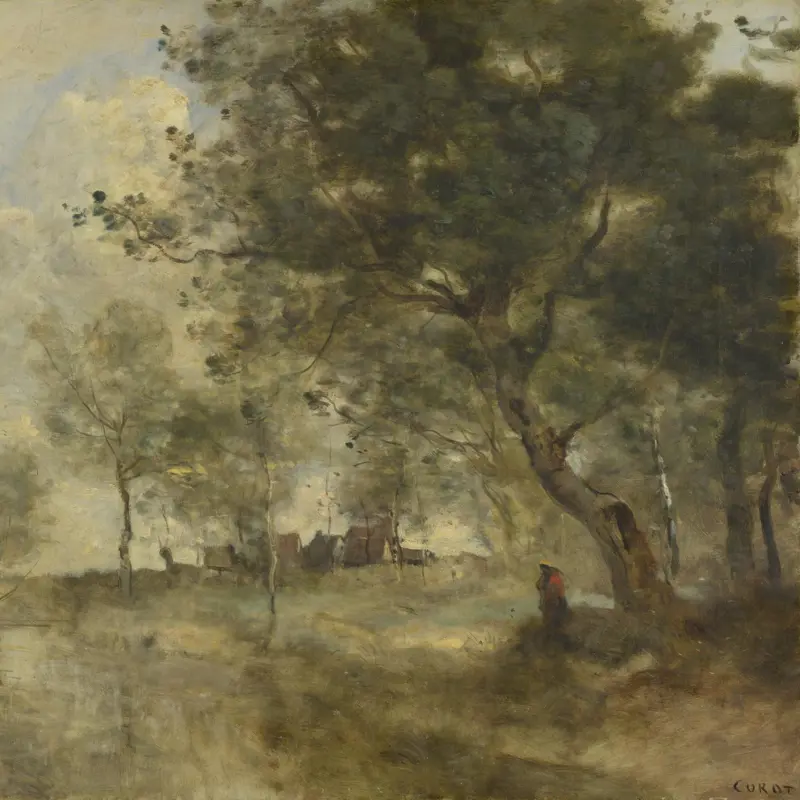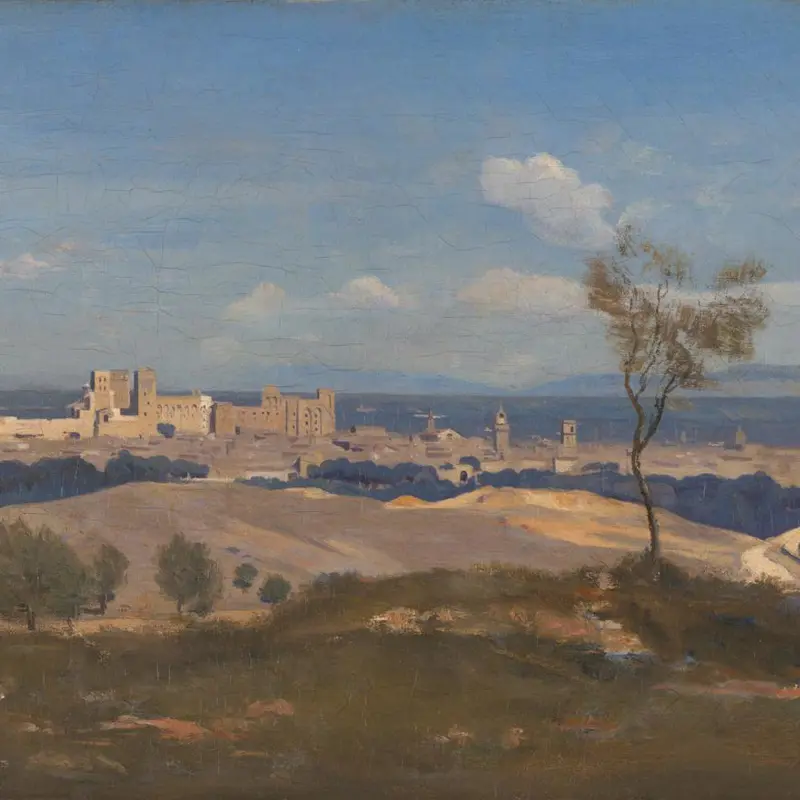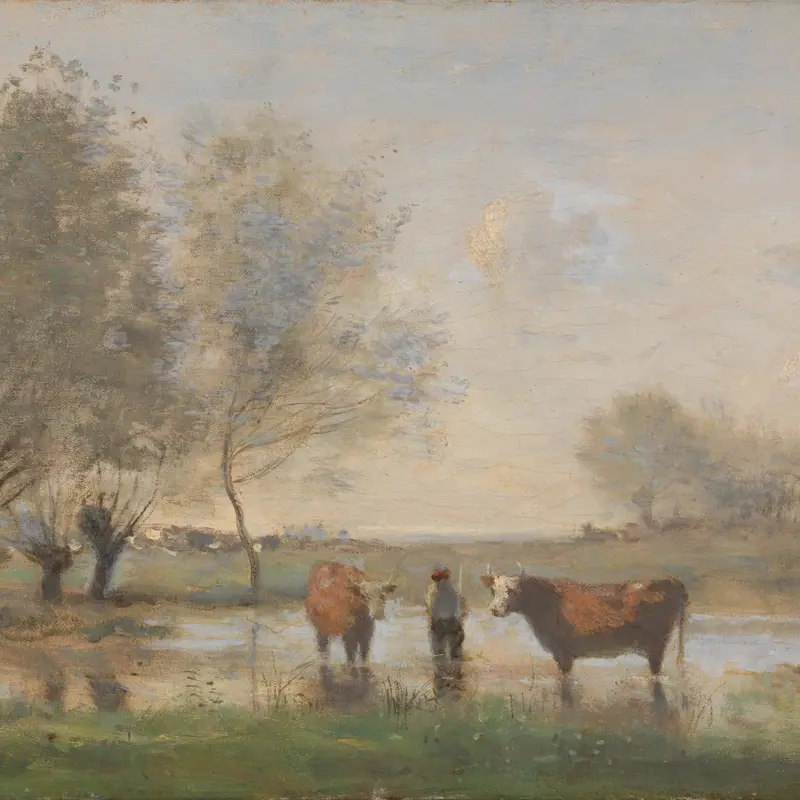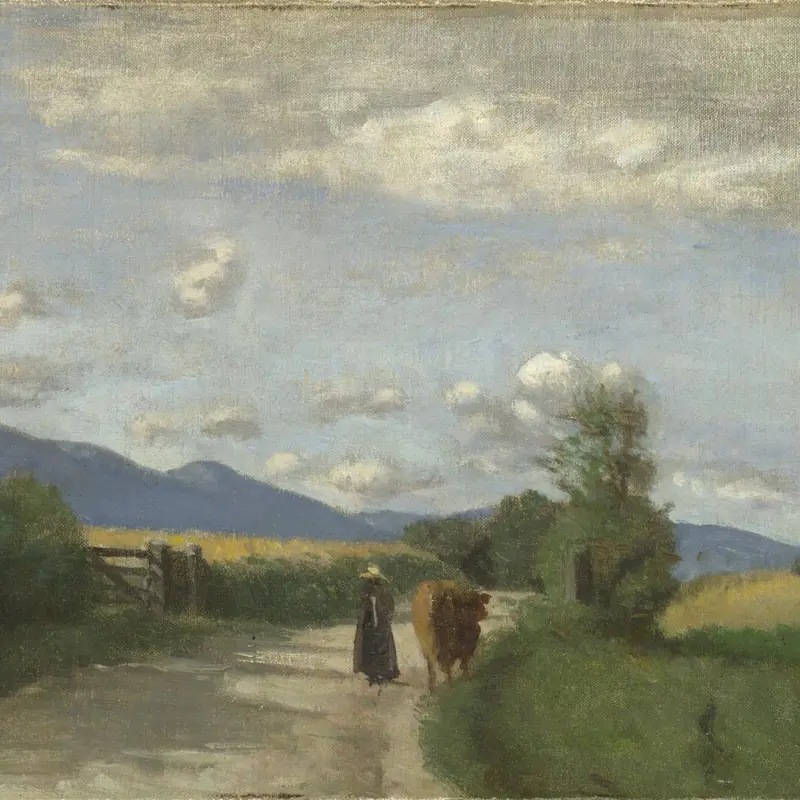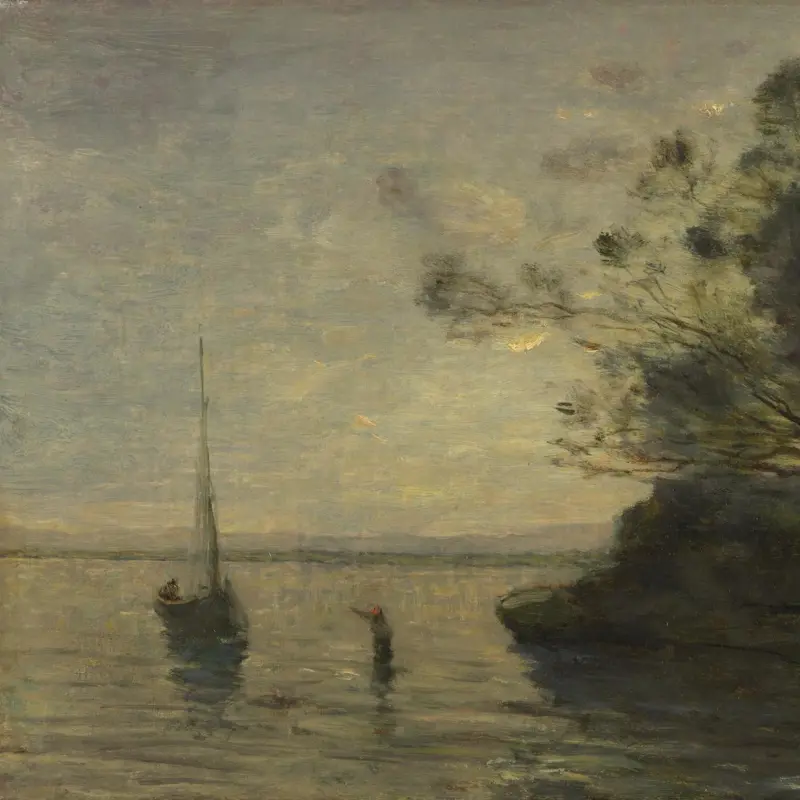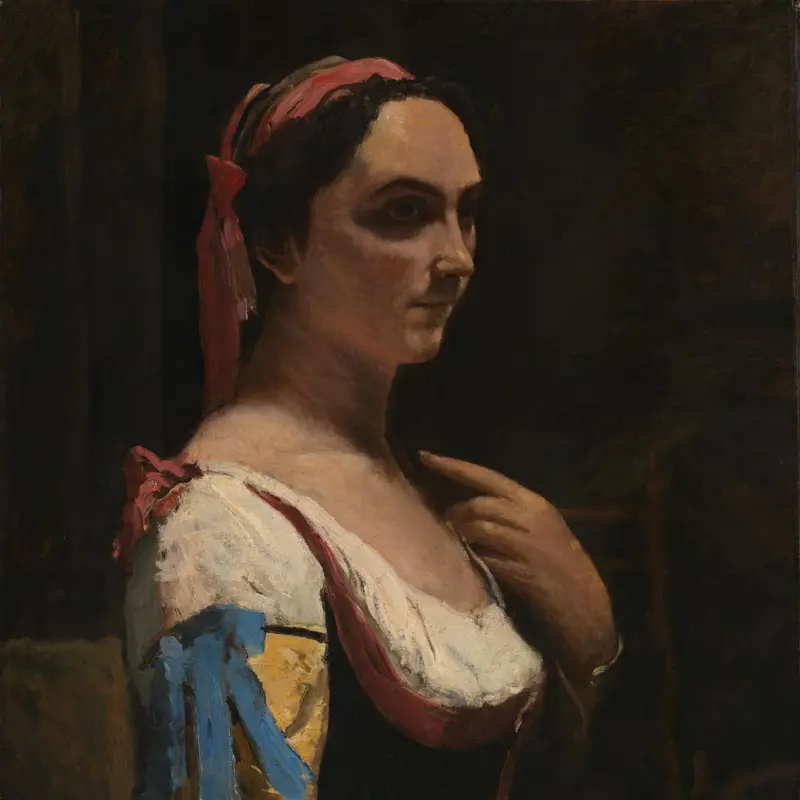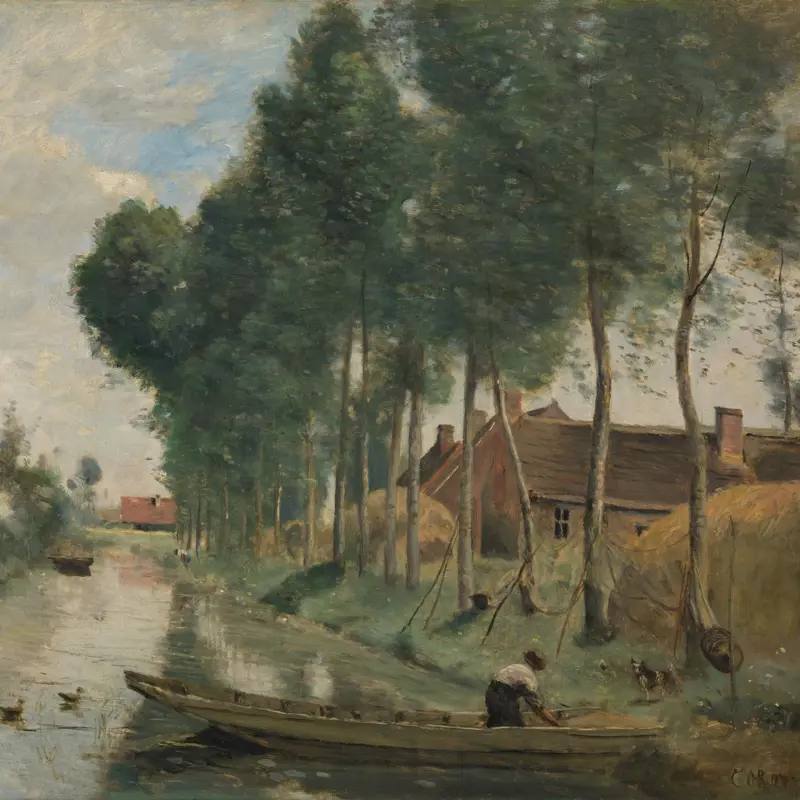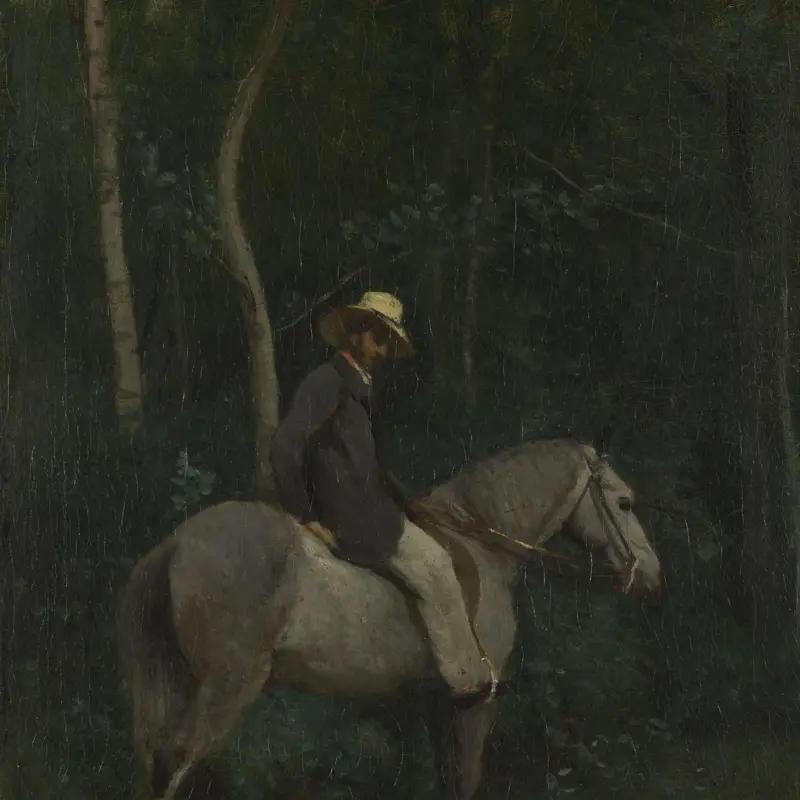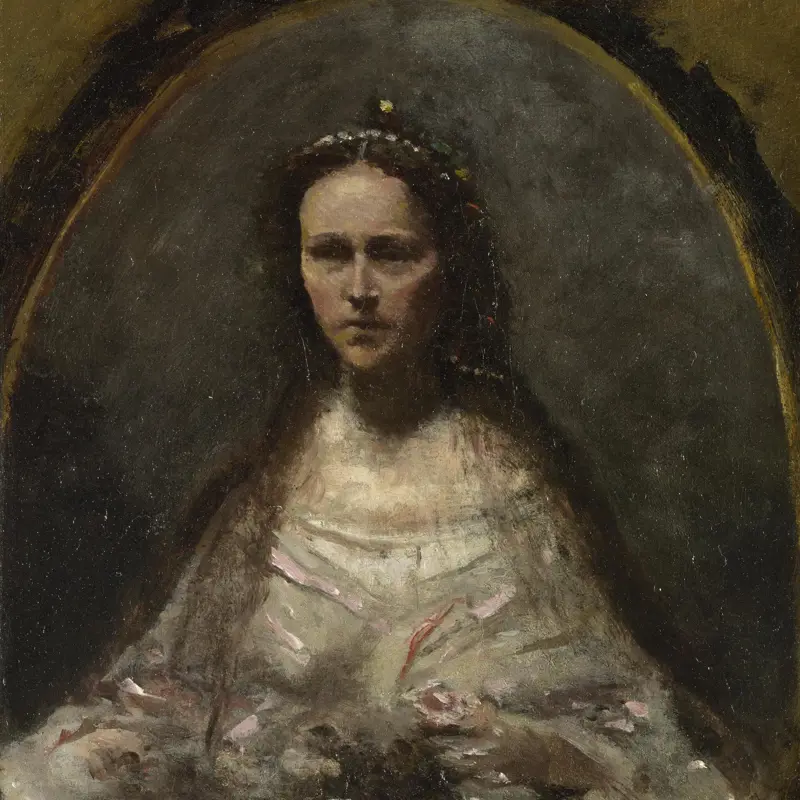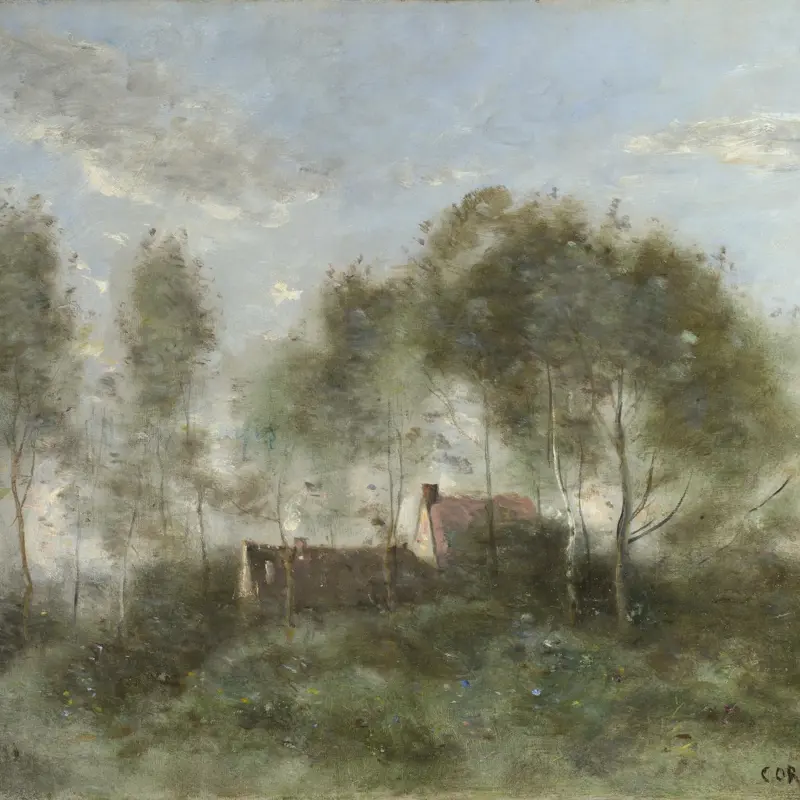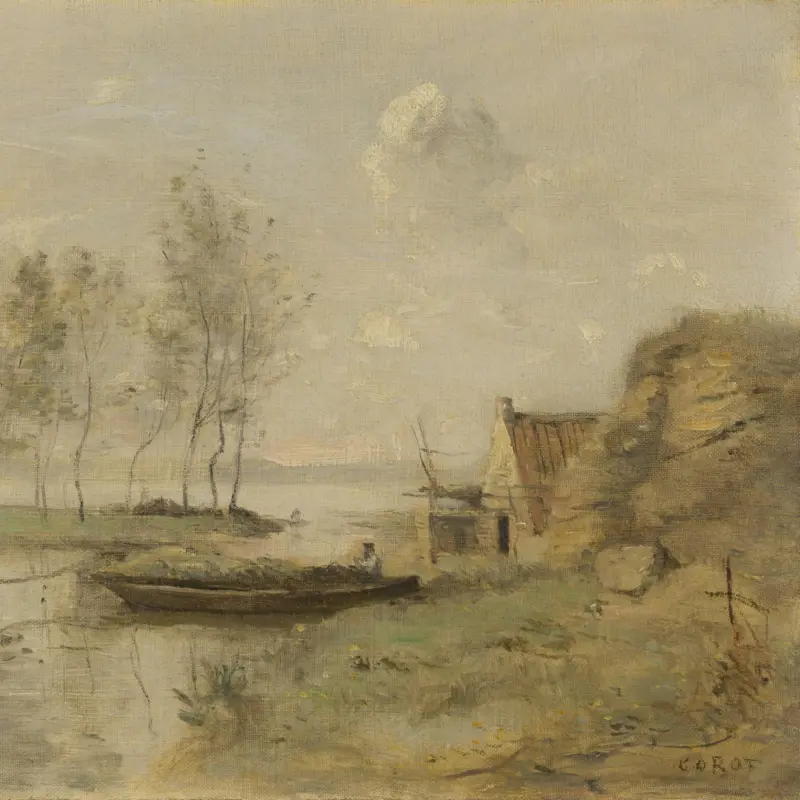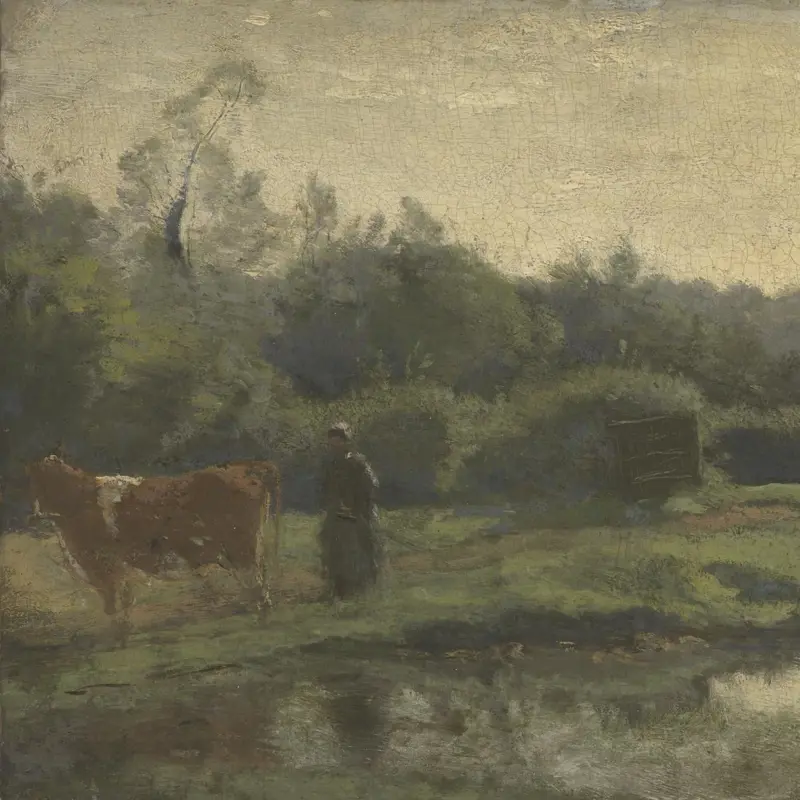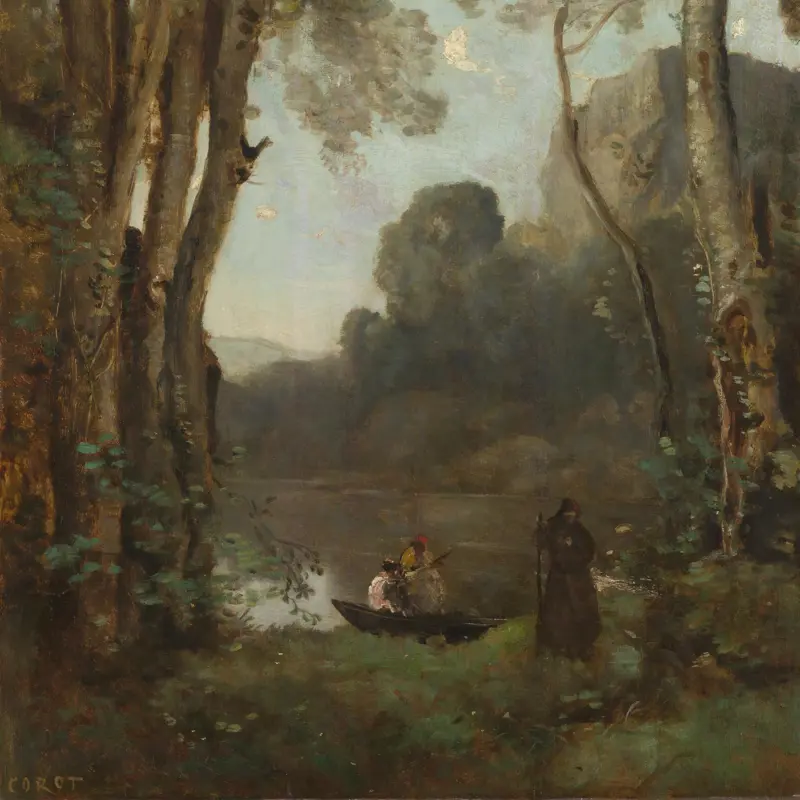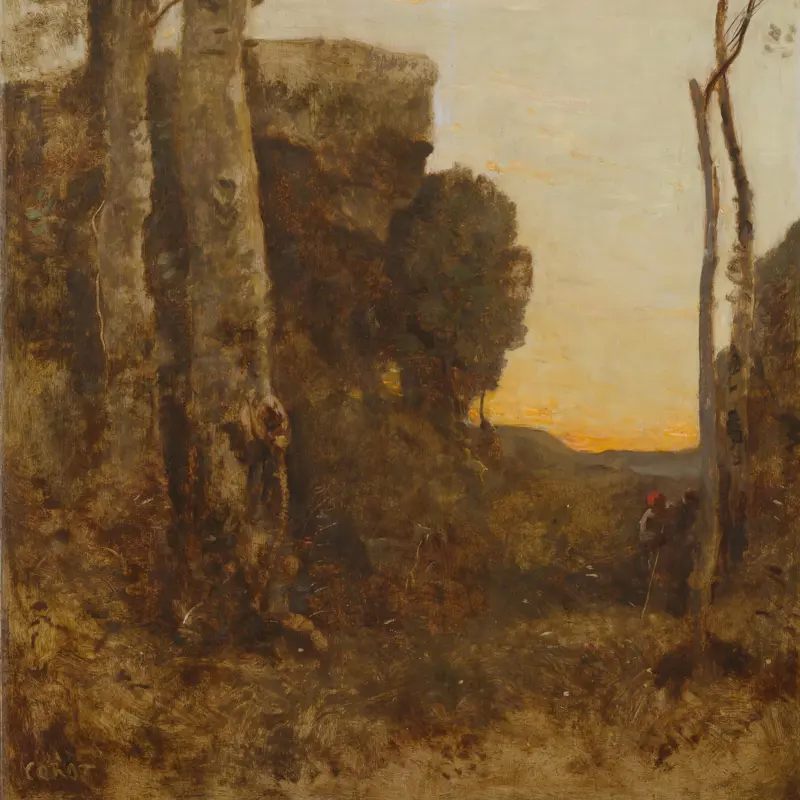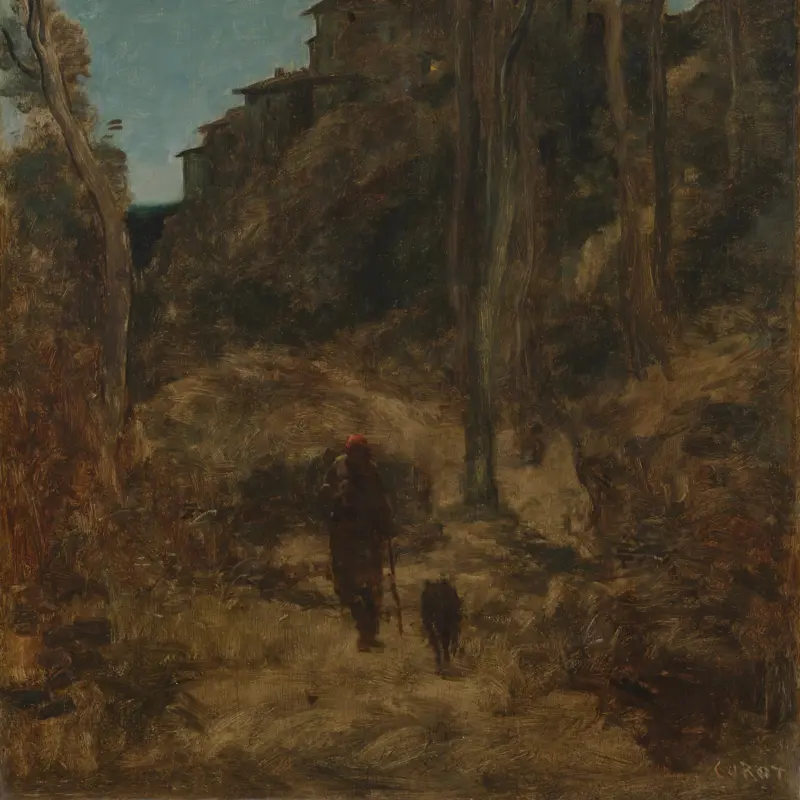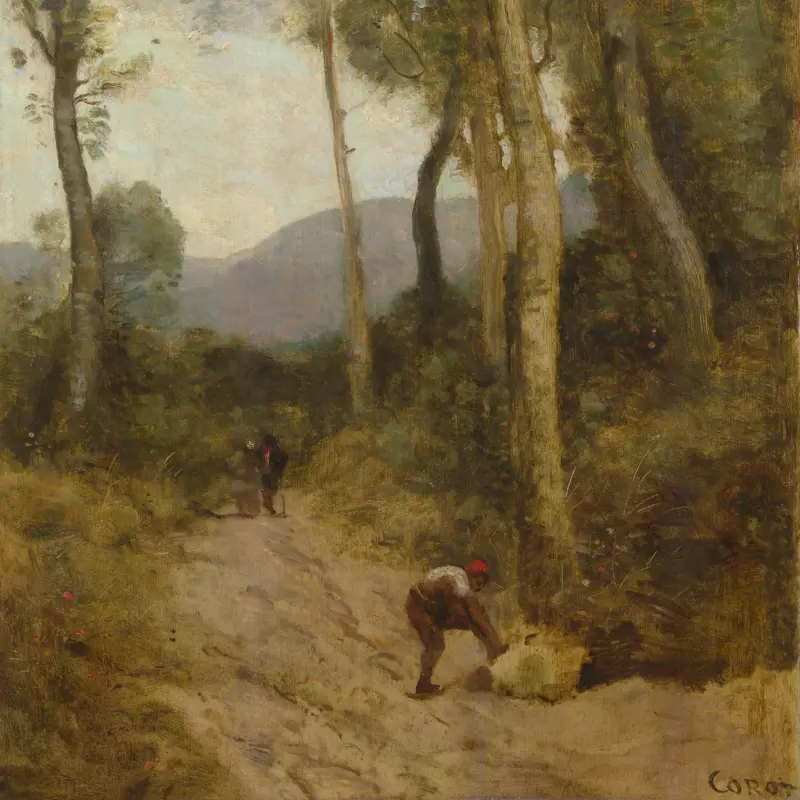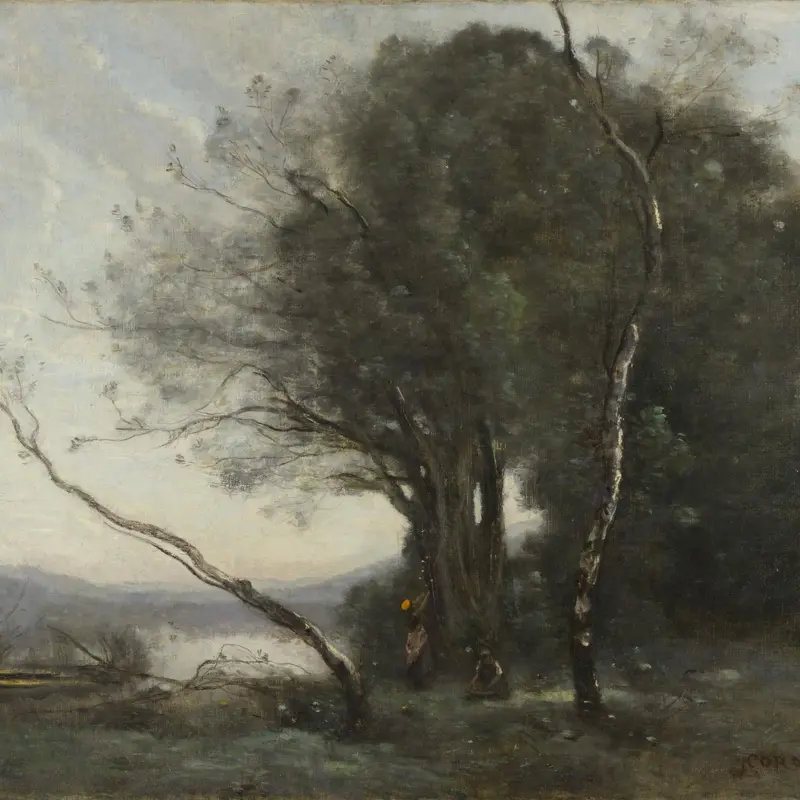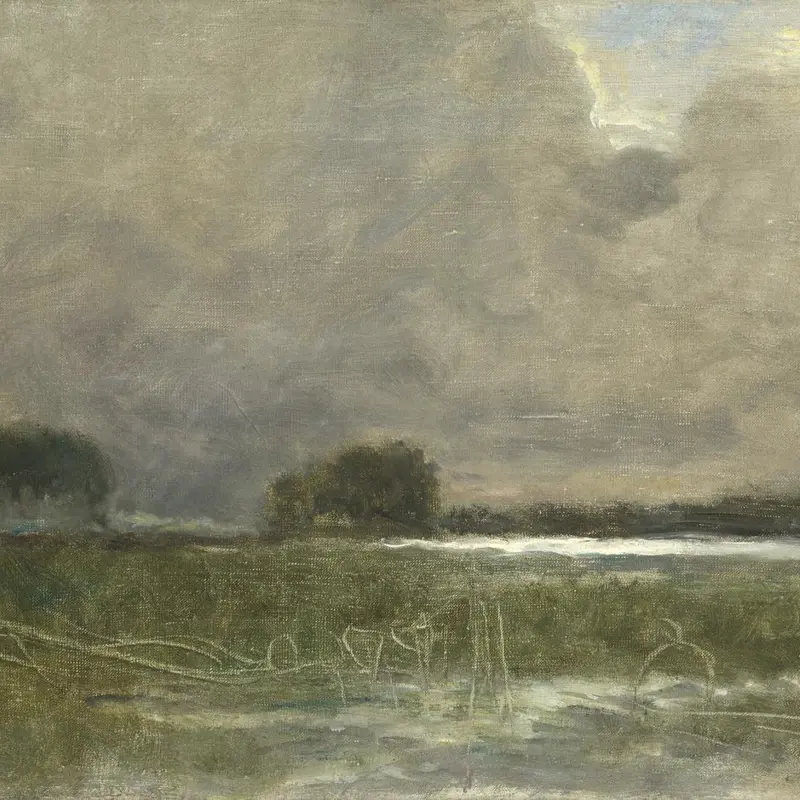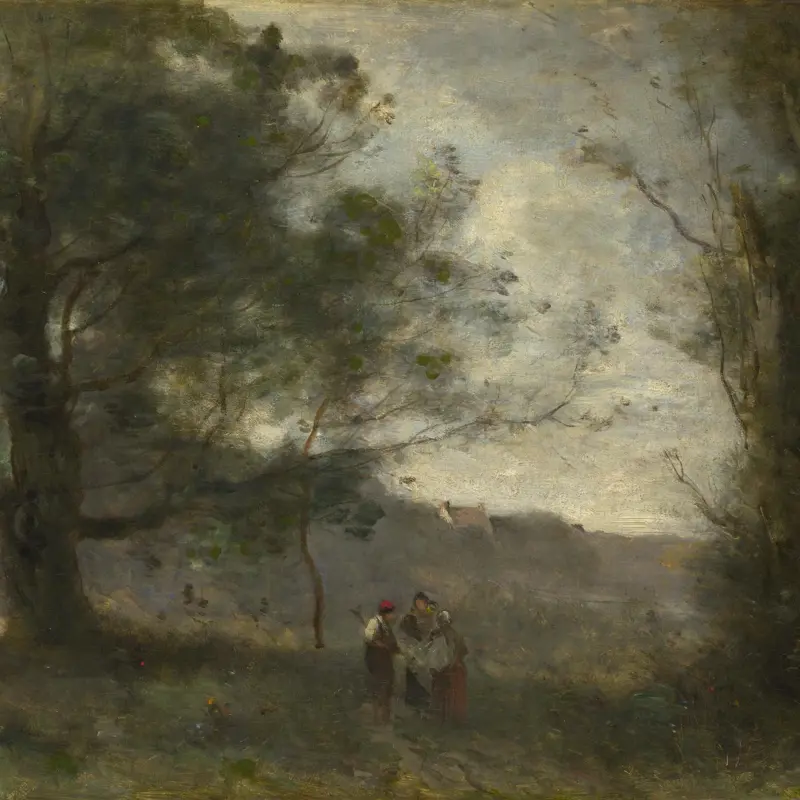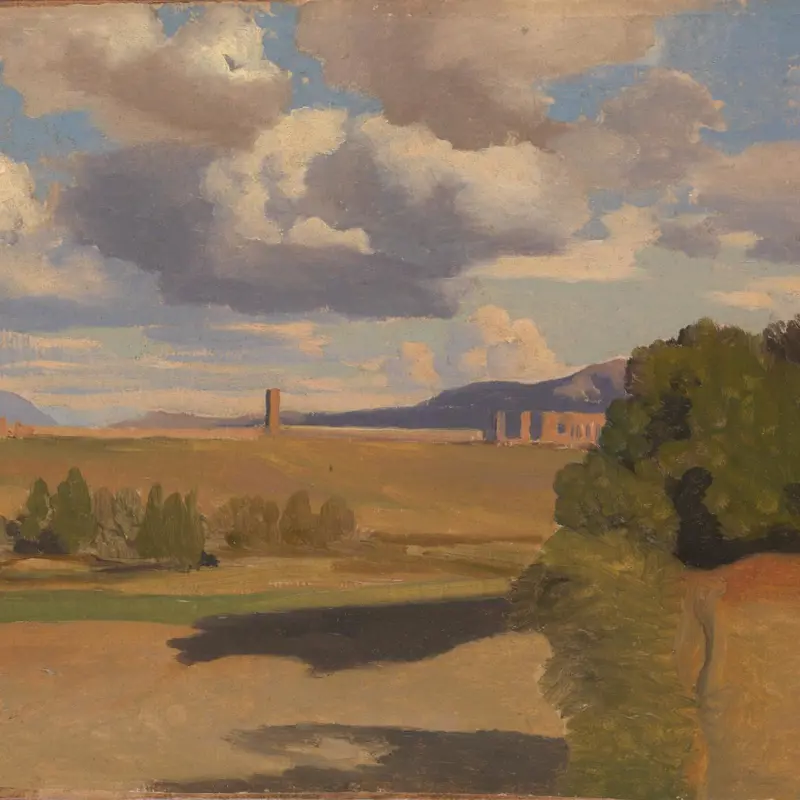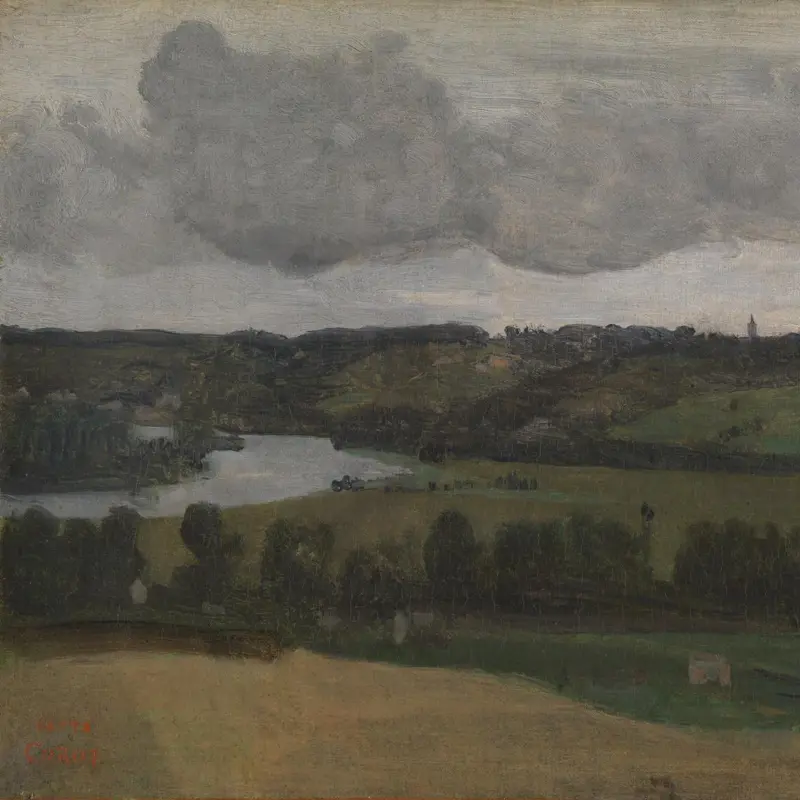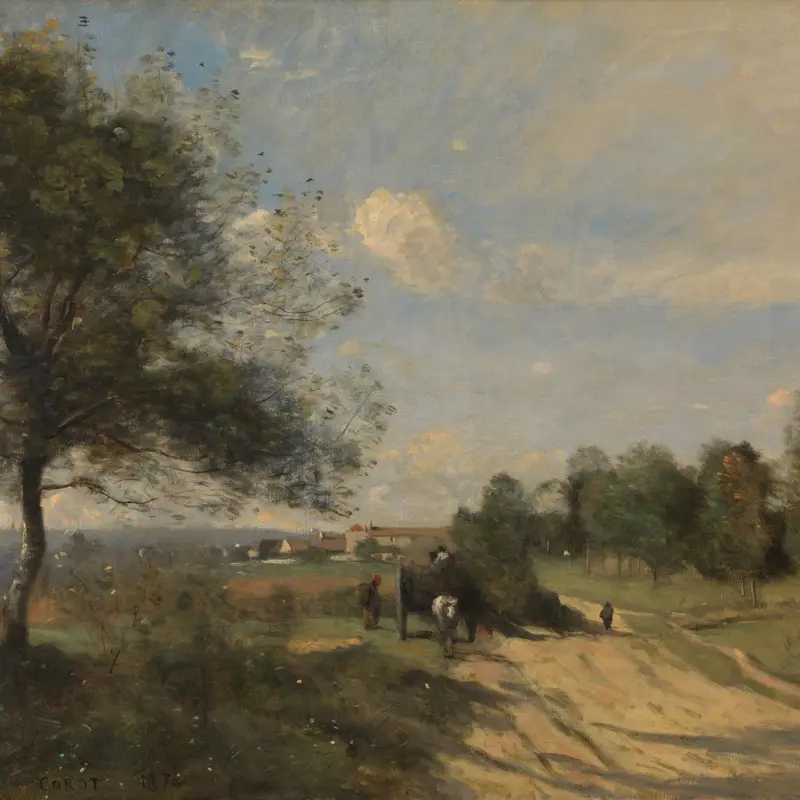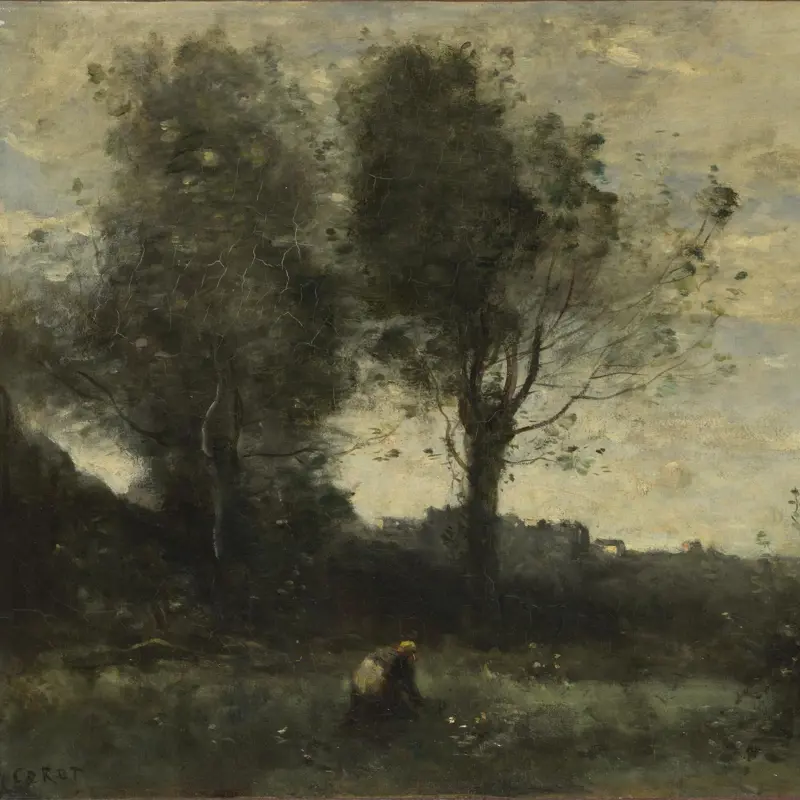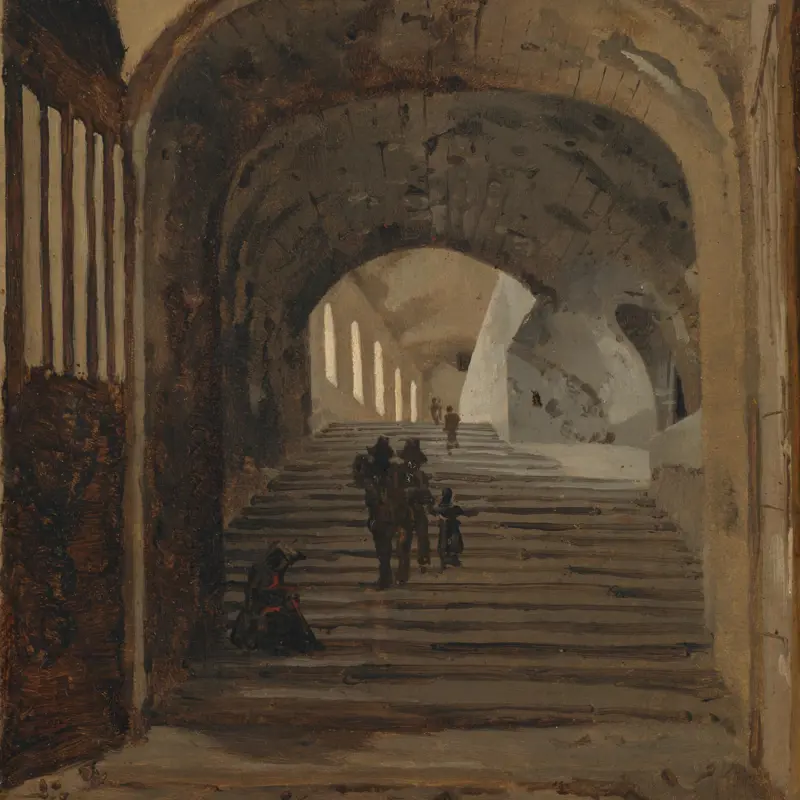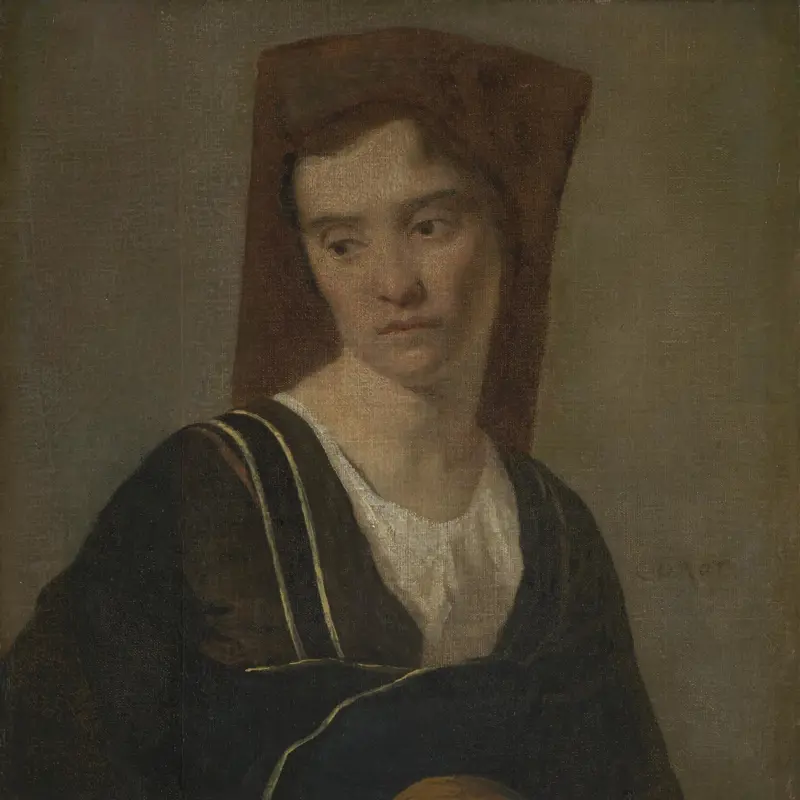Jean-Baptiste-Camille Corot, 'A Wagon in the Plains of Artois', 1871
About the work
Overview
This view, painted in May 1871, forms part of a group painted by Corot during his stay in north-east France during the spring and summer of 1871. On the horizon, just right of centre, stands a windmill, its sails visible against the sky. Windmills were an extremely common sight in the Pas de Calais region at this period. In the foreground is a horse, its head bowed, and the wagon from which this painting takes its name.
It was most probably Corot who added a layer of grey over the first, off-white preparatory layer applied by the makers of the canvas. He has left areas of it exposed, and in the sky it forms the darkest tones of the clouds. For the sky Corot used a thick blue paint mixed with white. Using long strokes which closely follow the line of the horizon, he covered several trees, the ghostly forms of which can still be seen through the paint.
Key facts
Details
- Full title
- A Wagon in the Plains of Artois
- Artist
- Jean-Baptiste-Camille Corot
- Artist dates
- 1796 - 1875
- Date made
- 1871
- Medium and support
- Oil on canvas (unlined)
- Dimensions
- 27.3 × 35.2 cm
- Inscription summary
- Signed
- Acquisition credit
- Salting Bequest, 1910
- Inventory number
- NG2628
- Location
- Not on display
- Collection
- Main Collection
Provenance
Additional information
Text extracted from the ‘Provenance’ section of the catalogue entry in Sarah Herring, ‘National Gallery Catalogues: The Nineteenth Century French Paintings’, vol. 1, ‘The Barbizon School’, London 2019; for further information, see the full catalogue entry.
Exhibition history
-
2009Corot to Monet: A Fresh Look at Landscape from the CollectionThe National Gallery (London)8 July 2009 - 20 September 2009
-
2013Corot in the Light of the NorthMusée de la Chartreuse5 October 2013 - 6 January 2014Musée des Beaux-Arts (Carcassonne)21 February 2014 - 21 May 2014
-
2023Light and Soul, Early Impressions of the French LandscapeCooper Gallery23 June 2023 - 7 October 2023
Bibliography
-
1905A. Robaut, L'oeuvre de Corot: Catalogue raisonné et illustré, Paris 1905
-
1906E.G. Halton, 'The Collection of Mr Alexander Young, I: The Corots', International Studio, XXX, 1906, pp. 3-22
-
1908'The French School in the National Gallery', The Burlington Magazine, XIII/66, 1908, pp. 327-44
-
1957Martin Davies, National Gallery Catalogues: French School, 2nd edn (revised), London 1957
-
1970Davies, Martin, and Cecil Gould, National Gallery Catalogues: French School: Early 19th Century, Impressionists, Post-Impressionists etc., London 1970
-
2001
C. Baker and T. Henry, The National Gallery: Complete Illustrated Catalogue, London 2001
-
2004D. Horbez, Corot et les peintres de l'école d'Arras, Tournai 2004
-
2013M.P. Botte et al., Corot dans la lumière du nord (exh. cat. Musée de la Chartreuse de Douai; Musée des Beaux-Arts de Carcasonne) Milan 2013
-
2019Herring, Sarah, National Gallery Catalogues: The Nineteenth Century French Paintings, 1, The Barbizon School, London 2019
About this record
If you know more about this work or have spotted an error, please contact us. Please note that exhibition histories are listed from 2009 onwards. Bibliographies may not be complete; more comprehensive information is available in the National Gallery Library.

